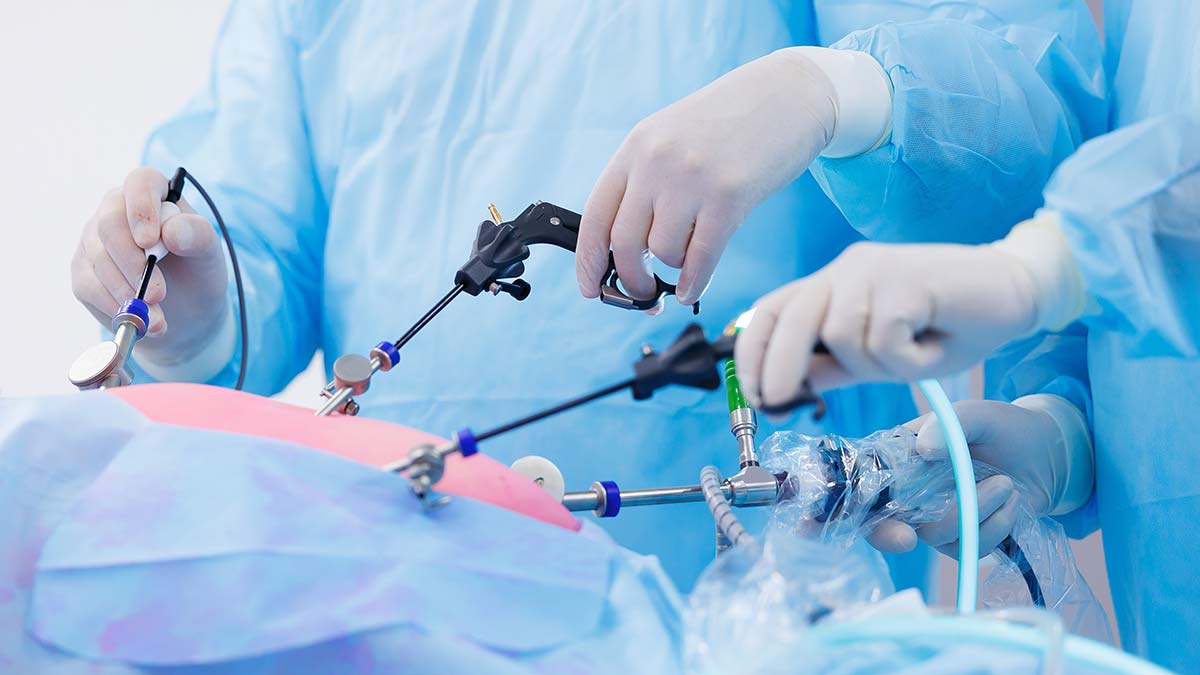Dr Nitin Sardana is senior consultant, minimally invasive and general surgery at Marengo Asia Hospitals, Faridabad. His area of special interest is complex cases needing laser interventions. When not being a doctor, he enjoys long drives and playing outdoor sports with his son.
What is minimally invasive surgery? These are surgeries which are performed with small cuts (5mm-10mm) over the abdomen or chest. There are usually three or four cuts depending on the type of surgery or disease for which they are being performed. For some surgeries, like gallbladder or colon surgery, a single hole or cut is used. These are called SILS―Single Incision Laparoscopic Surgery.
Minimally invasive versus laparoscopic surgery: Minimally invasive surgery is an umbrella term for surgeries where there is little damage to the tissue because of the small hole. Laparoscopic surgeries are a type of minimally invasive surgery. Other minimally invasive surgeries are VATS (Video Assisted Thoracic Surgery) and LASER procedures carried out for piles, fistula and pilonidal sinus. Robotic surgeries are also a kind of minimally invasive surgery.
The benefits: There is minimal blood loss and less chance of wound infection. The post-operative pain and hospitalisation period are minimal, and the patient can return to his normal routine soon. And small cuts mean smaller scars. Often these surgeries can be performed as day care procedures.
Almost no cons: With advances in medical science and better skill of doctors, there are very few cons for such surgeries. At worst, they will have the same risk as open surgeries. But minimally invasive surgeries might not be available everywhere. They are also not suitable for complex cases. There is a steep learning curve for such surgeries to be skilfully performed. However, as a rule, they take lesser time than conventional surgeries. The downtime is also lesser with minimal scarring.
Suitable for all ages: Although minimally invasive surgeries can be performed on patients of all ages, a pre-operative evaluation is essential―just like it is in all kinds of surgery. The overall health of the patients, their prior surgeries, the complexity of the procedure, and the skill-set of the surgeon are all factors to be considered.
What about obese or old patients? Minimally invasive surgery is ideal for obese and elderly patients as morbidity is much lower. Of course, this is except in cases where there are severe medical issues like respiratory or cardiac problems. In such cases, there must be proper optimisation of the patient before surgery. A cardiologist or pulmonologist must be consulted for an expert opinion prior to surgery.
No gender differential: There is no marked gender differential in surgery outcomes. Women may prefer such surgeries because of minimal scarring.
Availability of the surgery: Such surgeries are now being offered in tier 2 and tier 3 cities. They are, however, yet to reach rural India.
The cost factor: The cost of laparoscopic surgeries is comparable with open surgeries. Robotic surgeries are more expensive given the high cost of consumables.
Most common conditions: Minimally invasive surgeries can be performed for a range of diseases such as gall bladder stones, appendicitis, various kinds of hernia, uterus and ovarian pathologies, intestinal diseases, weight loss (bariatric surgery) and many chest conditions. Most commonly, they are performed for laparoscopic cholecystectomy (a procedure to remove the gall bladder), appendectomy (removal of appendix), abdominal hernias (abdominal organs pushing through walls of abdominal cavity), bariatric surgeries, ovarian cysts, hysterectomies (removal of uterus), shoulder arthroscopy (for tears in shoulder muscles and tendons), and spine surgeries (like spinal stenosis where pressure on the spinal cord and nerves leads to pain, numbness and weakness).
The procedure: These surgeries usually involve three to four small cuts on the abdomen. The surgeon performs them with the help of a laparoscope (a thin, flexible tube with camera) helped by an assistant. The camera magnifies the insides which aids in the surgery. The surgeon controls the instruments through the ports created by the incisions, monitoring them on a video screen.
Special instruments used: Besides the laparoscope, the instruments used are trocar (a pen-like instrument that helps in draining fluids), display monitor, CO2 insufflator (for delivery of carbon dioxide to open up space within the body to allow for sufficient viewing area), light cables (to transmit light to the laparoscope), balloons (to create space to operate in specific areas), endovascular catheters (tiny catheters that travel through blood vessels), and imaging equipment (like monitors that project video from the endoscope, and ultrasound or fluoroscopy to locate the surgical site). Different kinds of endoscopes (narrow tubes with camera) are used for different kinds of surgery. Thus, a laparoscope is used for the abdominal cavity, a thoracoscope for the chest cavity, and an arthroscope goes into the joints.
Minimally invasive surgery versus robotic surgery: Robotic surgery can be performed for all surgeries done laparoscopically, but its main advantage is in complex surgeries. However, even in robotic surgeries, it is the skill of the surgeon, who operates the robotic arms, that matters.
How to prepare for surgery: The foremost thing is to have a conversation with your doctor about why the surgery has to be performed. Discuss the kinds of procedures available, the pros and cons and alternatives. Most important, trust your doctor and the centre where the procedure is taking place.
What about repeat surgery? This depends on various factors. For example, does the repeat surgery have to be done laparoscopically or will it be conventional surgery? Often, a previous surgery will leave adhesions (bands of scar-like tissue that form between two surfaces inside the body and cause them to stick together) and in that case, open surgery will be a better option.
What is new? Robotic surgery is gaining popularity. Virtual reality and 3D surgeries will lead to greater precision. The use of AI is on the horizon. Integrated therapies will also be used more.



